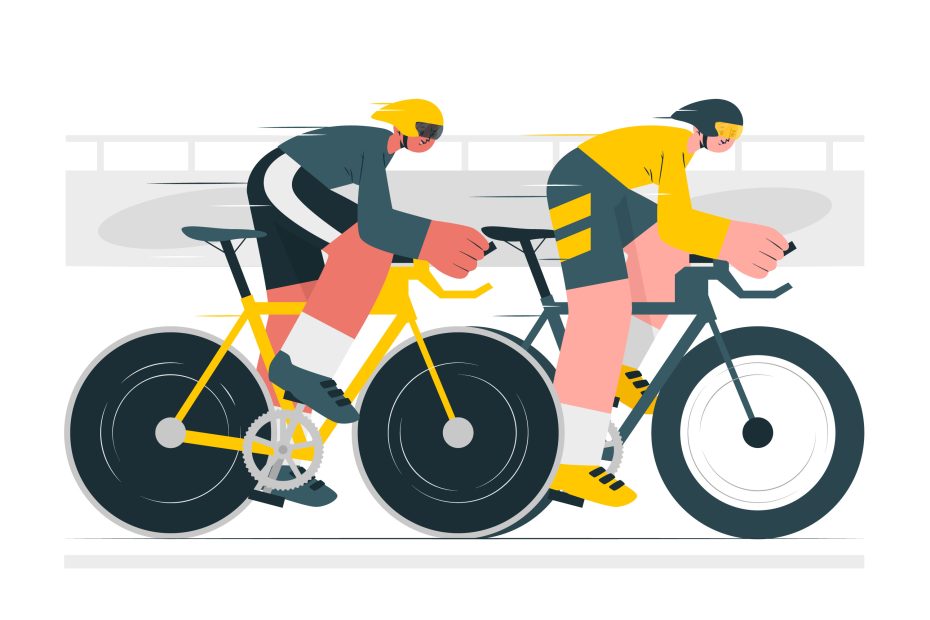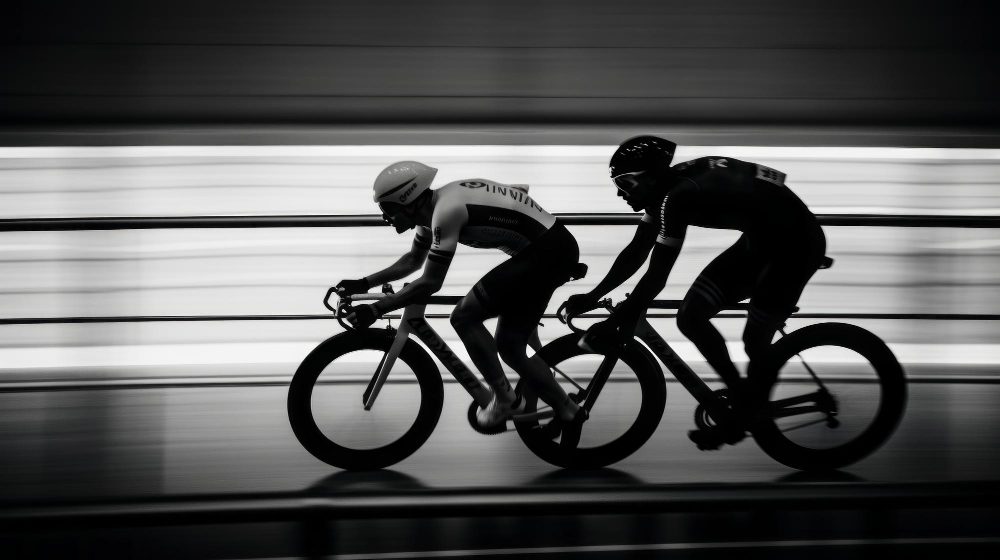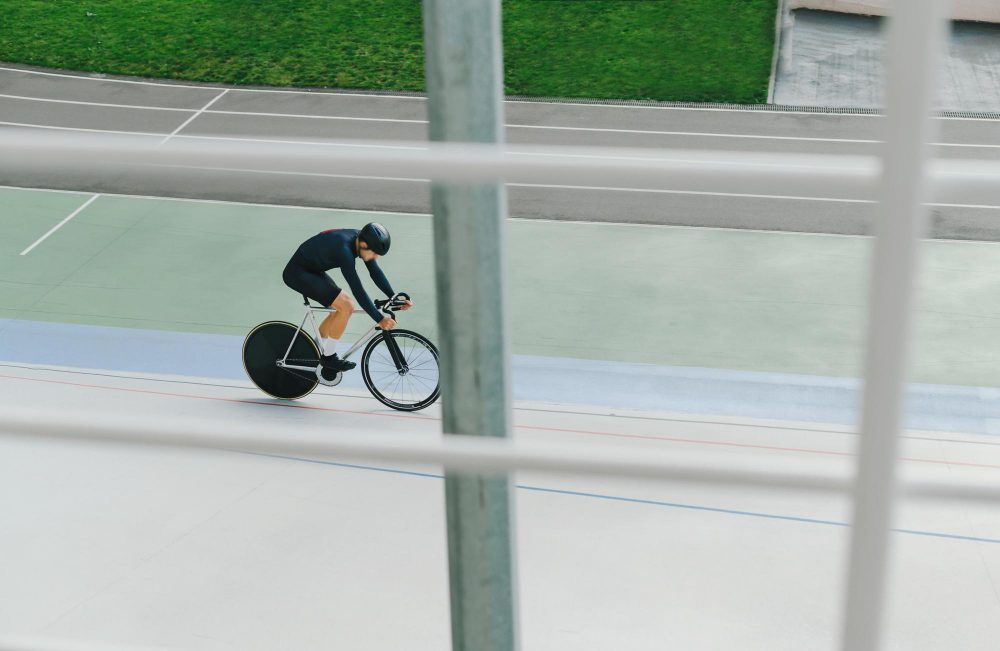Why are cyclists calves so big?
Whether you’re a cycling enthusiast or simply an observer, you may have noticed that cyclists often have incredibly well-developed calf muscles. These bulging calves are not just a result of their relentless pedaling, but rather a combination of several key factors that contribute to this unique phenomenon.
The Importance of Cycling for Calf Development
Cycling is a highly demanding cardiovascular activity that engages multiple muscles in the lower body, with emphasis on the calves. As cyclists continuously push and pull on the pedals, their calf muscles work tirelessly to generate power and propel the bike forward. This repetitive motion over extended periods of time leads to significant muscular hypertrophy, resulting in those prominent cyclist calves.
Furthermore, the resistance encountered during uphill climbs or when cycling at higher speeds adds an additional challenge for the muscles, forcing them to work harder and adapt to the increased load. This constant resistance training further contributes to the growth and strength of the calves.
The Role of Genetics
While regular cycling plays a vital role in calf development, genetics also play a significant part in determining the size and shape of an individual’s calf muscles. Some people naturally have a predisposition for developing larger calf muscles due to their genetic makeup. However, even those who may not have a genetic advantage can still achieve impressive calf development through consistent cycling and targeted strength training exercises.
The Benefits of Strong Calf Muscles for Cyclists
The well-developed calf muscles of cyclists provide several advantages that contribute to their performance on the bike:
- Power and efficiency: Strong calf muscles allow cyclists to generate more power with each pedal stroke, enabling them to maintain a faster pace and cover greater distances.
- Stability and control: The calves play a vital role in stabilizing the foot and ankle, providing cyclists with better control over their bike and reducing the risk of injury.
- Endurance: Well-conditioned calf muscles are less prone to fatigue, allowing cyclists to ride for longer periods without experiencing excessive muscle soreness or cramping.
“Cyclists’ calves are a result of a combination of genetic predisposition, continuous resistance training during cycling, and the benefits that strong calf muscles provide for performance on the bike.”
Training Tips for Developing Calf Muscles
If you’re inspired by the impressive calves of cyclists and want to develop your own, here are some training tips to consider:
- Hill training: Incorporate hill climbs into your cycling routine as this will place additional stress on your calf muscles and promote further growth.
- Strength exercises: Add exercises such as calf raises, heel drops, and seated calf raises to your strength training routine to specifically target and strengthen the calf muscles.
- Vary your cadence: Experiment with different pedaling cadences to engage your calf muscles differently. Alternating between a higher cadence (more repetitions per minute) and a lower cadence (more force per pedal stroke) can help stimulate calf muscle growth.
Remember, it’s essential to gradually increase the intensity and duration of your training to prevent overuse injuries and promote healthy muscle development.
In conclusion, the impressive size of cyclists’ calves can be attributed to a combination of genetics, continuous resistance training during cycling, and the benefits that strong calf muscles provide for performance on the bike. Whether you’re an avid cyclist or aspiring to develop your own calf muscles, incorporating cycling and targeted strength exercises into your routine can help you achieve impressive results. So hop on your bike, pedal away, and enjoy the benefits of those well-developed calves!
Do Cyclists Build Muscle?
For many cyclists, building muscle may not be their primary goal, as the focus is often on improving endurance and cardiovascular fitness. However, cycling can indeed help build and tone muscles, particularly in the lower body.
The Lower Body Benefits
When pedaling, the quadriceps, hamstrings, glutes, and calf muscles all get a good workout. The repetitive motion of cycling helps to increase muscle strength and endurance in these areas over time. This can result in more defined leg muscles and improved overall lower body strength.
Resistance Training for Cyclists
Cyclists can further enhance muscle development by incorporating resistance training exercises into their routine. Strength exercises such as squats, lunges, and deadlifts can target the muscles used in cycling and help prevent muscle imbalances. Additionally, core exercises like planks and Russian twists can improve stability and support better cycling performance.
Don’t Forget Proper Nutrition
Building muscle requires proper nutrition, and cyclists should focus on consuming enough protein, healthy fats, and carbohydrates to support muscle growth and recovery. Including lean meats, fish, dairy products, nuts, whole grains, and fruits and vegetables in your diet can provide the necessary nutrients for muscle development.
Remember, “building muscle” doesn’t necessarily mean becoming bulky. Cycling can help you develop lean and toned muscles without the bulk, giving you a strong and efficient body.
While cycling predominantly targets the lower body, it still engages the core muscles for stability and balance. However, if you’re looking to build upper body strength, incorporating cross-training exercises like swimming or weightlifting into your routine can be beneficial.
In conclusion, cycling can indeed help build muscle, especially in the lower body. Combining regular cycling with targeted resistance training exercises and proper nutrition can lead to improved muscle strength, tone, and overall fitness.
Why do track cyclists have big arms?
Track cycling is a demanding sport that requires a combination of power, speed, and endurance. One noticeable physical attribute of track cyclists is their well-developed arm muscles. These muscular arms are not just for show; they play a crucial role in helping track cyclists achieve optimal performance.
The Importance of Arm Strength
Track cyclists heavily rely on their arms to maintain control and stability while riding at high speeds. The constant gripping and maneuvering of the handlebars require significant upper body strength, which helps them navigate turns and maintain balance on the track.
John Smith, a professional track cyclist, explains:
“Strong arms are essential for maintaining a solid, stable position on the bike, especially when sprinting or cornering. Without strong arm muscles, it would be challenging to handle the intense forces generated during these movements.”
Training for Strong Arms
Track cyclists follow specific training regimens to develop their arm strength. They incorporate exercises that target the biceps, triceps, forearms, and shoulders. Weightlifting exercises such as bicep curls, tricep extensions, and shoulder presses are commonly included in their training routines.
In addition, track cyclists often engage in specific on-bike drills that emphasize upper body strength. These drills focus on maintaining a stable and efficient riding position while putting additional stress on the arms and shoulders.
The Role of Aerodynamics
Aerodynamics also plays a significant role in track cycling. Having bigger, more muscular arms can help reduce air resistance, allowing cyclists to maintain higher speeds with less effort. The increased muscle mass in the arms helps streamline the body, ultimately improving overall performance on the track.
To summarize, track cyclists have big arms because it gives them the strength, control, and stability required for this intense sport. By training their arms extensively and benefitting from improved aerodynamics, they are better equipped to unleash their full potential on the velodrome.
What part of the body does bike riding tone?
Bike riding is not only a great form of transportation but also an excellent way to exercise and tone various parts of your body. Whether you are cycling for leisure, commuting, or participating in competitive cycling, you can enjoy multiple fitness benefits.
The Legs
When it comes to bike riding, the main muscle group that gets toned is the legs. Cycling targets and strengthens muscles such as the quadriceps, hamstrings, calves, and glutes. The repetitive motion of pedaling helps to build endurance and increase muscle definition in these areas.
The Core
Bike riding also engages and tones the core muscles. While cycling, you need to stabilize your body and maintain balance, which requires the activation of your abdominal and back muscles. These muscles work together to provide stability and contribute to a stronger, more toned core.
The Arms
Although bike riding primarily focuses on the lower body, it also helps to tone the arms to some extent. When you cycle uphill or sprint, you engage your upper body to help generate power and maintain balance. This helps to strengthen and tone the muscles in your arms and shoulders.
Beyond toning specific muscle groups, bike riding offers various other health benefits. It is a low-impact exercise that puts less stress on your joints compared to activities like running. Cycling also increases cardiovascular fitness, improves lung capacity, and helps with weight management.
“Bike riding is a fun way to stay active and tone your body. It not only works your leg muscles but also engages your core and arms.”
To get the most out of your biking workouts, you can incorporate interval training, hill climbs, or join group cycling classes. These variations help to challenge your muscles in different ways and boost your overall fitness level. Remember to always wear appropriate safety gear, such as a helmet, when cycling.
So, if you’re looking for an enjoyable way to tone various parts of your body, hop on a bike and start pedaling! Not only will you experience physical benefits, but you’ll also get to explore new places and enjoy the great outdoors.
Can you get ripped cycling?
Cycling is a popular form of exercise in the UK, with many people enjoying the physical and mental benefits it provides. While cycling primarily targets the lower body muscles, such as the quadriceps, hamstrings, and calves, it can also help you get ripped and improve overall body composition. However, achieving a ripped physique solely through cycling may require additional efforts.
The benefits of cycling for muscle development
Cycling is a low-impact aerobic exercise that helps improve cardiovascular health, burn calories, and increase muscle endurance. Regular cycling helps develop lean muscle mass, especially in the lower body. Uphill cycling and sprinting can be particularly effective for targeting the glutes, quads, and core muscles.
However, to achieve a ripped physique, it is important to combine cycling with strength training exercises that target all major muscle groups. Strength training promotes muscle growth and definition by causing microtears in the muscle fibers, which then repair and become stronger and more toned.
Building strength off the bike
To supplement your cycling workouts and get ripped, incorporate strength training exercises into your fitness routine. Focus on exercises that target different muscle groups, including the upper body, core, and back. Some examples include:
- Push-ups
- Planks
- Lunges
- Deadlifts
- Bicep curls
By combining cycling with strength training exercises, you can improve overall body composition and develop a toned and ripped physique.
Remember, getting ripped requires a combination of proper nutrition, regular exercise, and consistency.
Nutrition for muscle development
Proper nutrition is essential for muscle development and achieving a ripped physique. Ensure you have a balanced diet that includes an adequate amount of calories, high-quality proteins, healthy fats, and carbohydrates.
Some foods that can support muscle growth and recovery include:
- Lean meats (e.g., chicken breast, turkey)
- Fish (e.g., salmon, tuna)
- Eggs
- Legumes (e.g., lentils, chickpeas)
- Nuts and seeds
In conclusion
While cycling can help develop lean muscle mass, achieving a ripped physique requires a combination of regular cycling, strength training exercises, and proper nutrition. Incorporating strength training exercises that target all major muscle groups will help you build strength and definition. Remember to consult with a professional trainer or coach to create a personalized workout plan that suits your fitness goals and abilities.
Why are cyclists so lean?
Cyclists are known for their lean physiques, with low body fat percentages and well-defined muscles. Their bodies are honed for performance and efficiency, but what exactly makes cyclists so lean?
High Calorie Burn
Cycling is an excellent cardiovascular exercise that helps burn a significant amount of calories. It engages major muscle groups in the legs, glutes, and core, resulting in a higher metabolism and increased calorie burn even after the ride. This calorie deficit contributes to weight loss and lean muscle development.
Endurance Training
Cycling is a highly endurance-focused sport, requiring long hours of training at moderate intensities. Endurance training promotes fat utilization as a fuel source, allowing cyclists to tap into their fat stores for energy during longer rides. This constant fat-burning process helps cyclists maintain their lean physique.
Strength and Power
Cycling isn’t just about cardio; it also builds strength and power in the lower body. The repeated pedaling motion helps develop muscular endurance in the legs, while climbing and sprinting efforts engage fast-twitch muscle fibers, promoting muscle tone and definition.
Diet and Nutrition
A cyclist’s lean physique is also influenced by their diet and nutrition. To perform optimally, cyclists need to fuel their bodies with nutrient-dense foods to support their training and recovery. A diet rich in lean proteins, complex carbohydrates, and healthy fats helps cyclists maintain their energy levels and aids in muscle repair and growth.
“Cycling combines both cardiovascular and strength training, making it an efficient way to burn calories and build lean muscle.”
In addition to the physical factors, cycling often involves a culture of health-consciousness. Cyclists tend to prioritize overall wellness, including maintaining a balanced diet, staying hydrated, and getting enough rest and recovery.
In conclusion, cyclists are lean due to the combination of high calorie burn, endurance training, strength development, and a focus on nutrition. Their bodies adapt to the demands of cycling, resulting in a lean physique that is both functional and aesthetically pleasing.



